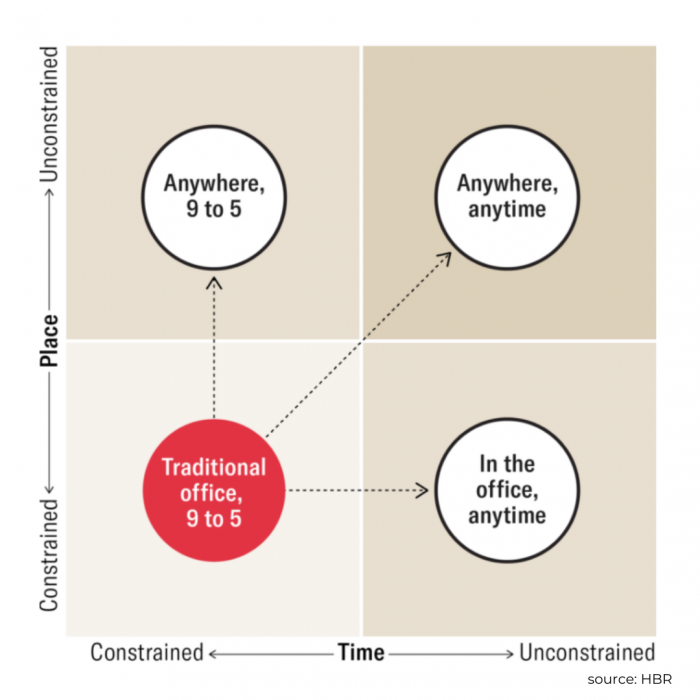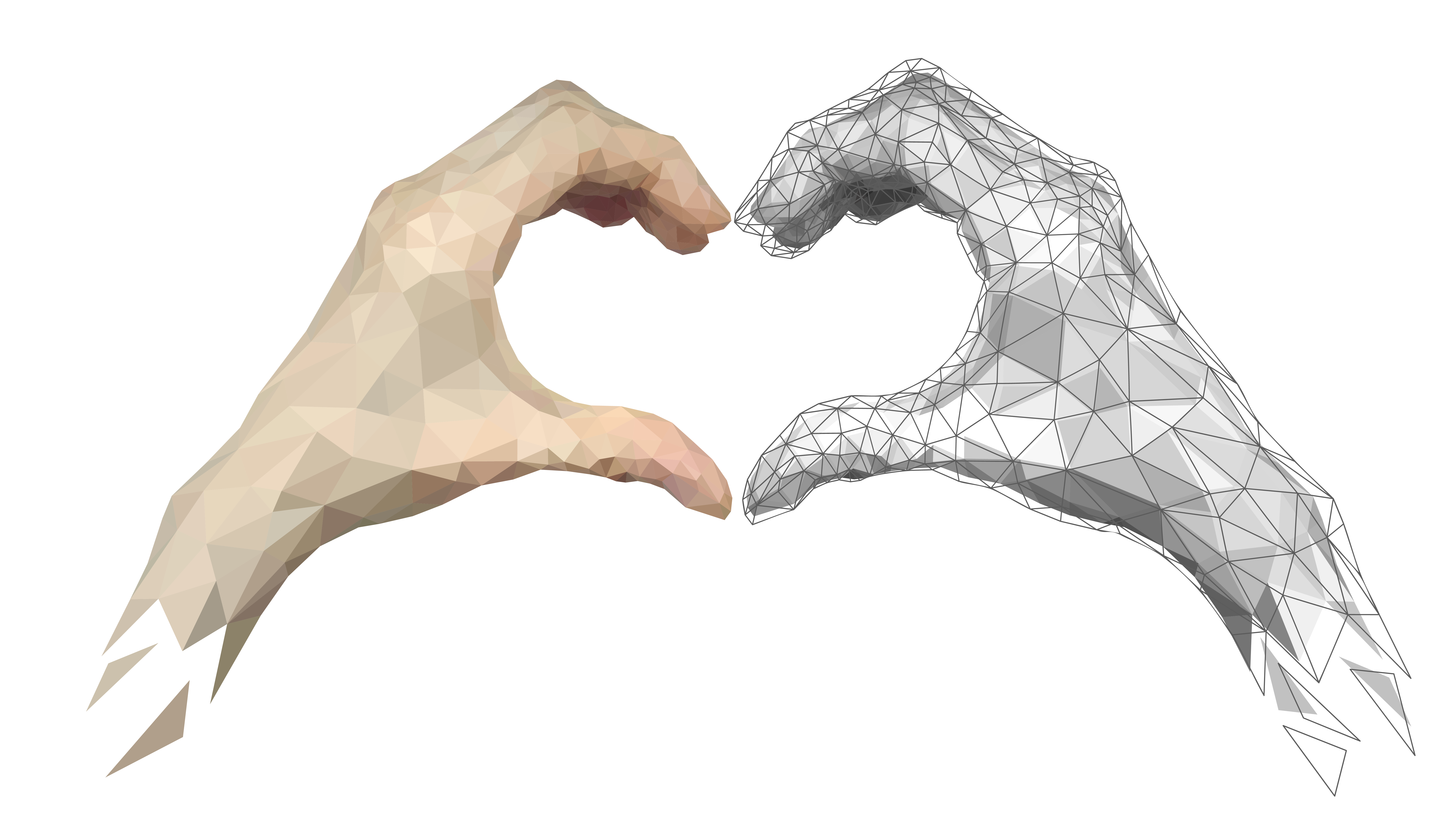Part II: Are we doing hybrid right? With the human in mind?
Imagine yourself on a Monday morning, staying in bed an extra 45 minutes as there is no commute today. You flip open your laptop, coffee in hand at 9am in your home office, working through emails, attending Monday online team meetings and finishing a report in the afternoon before heading out for a run. On Tuesday, you commute to the city office working with your project team on a client solution for most of the day, spending Wednesday and Thursday on client site and on Friday, you decide to spend the morning at home for some focussed work before heading into the office in the afternoon to finish off the work week with 1:1’s with some of your team members. At 5pm it’s time to socialise for after-work drinks with colleagues you haven’t see for a while.
Sounds pretty sweet? Or like your worst nightmare? Either way, it represents a work model most organisations are considering as vaccines are underway all over the world and employees are starting to return to the office.
This is part II of the blog ‘Are we getting hybrid right? With the human in mind?’ Last week I spoke about what to consider when designing physical space for your hybrid workforce; check it out here.
Today it’s all about leadership and work arrangements to ensure people stay engaged and productive.
One of the most discussed topics amongst leaders and executive teams is ‘What is the most suitable work arrangement that works for our employees, our clients and our organisation?’ One thing is clear; no size fits all.
What are the options:
- 100% back to the office where all employees are asked to work in the office all of their time.
- 100% working from home where no central office exists, and everyone works from home all of the time.
- Remote Hybrid: the office is still there when you want it, but attendance is optional.
- Flexible Hybrid: you can work from home but consider the office for teamwork or travel to client site.
- Planned Hybrid: you have a 2/3 or 3/2 ratio of working from home and office days.
- Tiered Hybrid: certain workers depending on their type of work, have to come back to the office full time or have the flexibility to choose a 2/3 day structure.
Planned Hybrid is the option most of the leaders I am working with are considering right now. They want their people to spend some time in the office for crucial face to face interactions like complex problem solving and collaborating, and innovating, but want to offer flexibility to work from home on some days.
A helpful model for keeping productivity in mind
Lynda Gratton presents this Work Arrangement model in a recent HBR article to figure out which work arrangement works best depending on the nature of the job:

Think about the jobs and tasks of your individual employees and consider critical drivers of productivity for each, such as energy, focus, coordination and corporation. Determine which work arrangement is most suitable for them and how it will impact the drivers if it changes.
For example, a team manager’s driver of productivity is coordination. They need to coordinate work, give updates and feedback and help problem solve in the moment so team members can continue to work. Time has to be asynchronous but it’s not necessary to work in the same space. Anywhere 9 to 5.
For solution architects and innovators, cooperation would be the main driver and face to face time is critical to be productive. The main office space, or even better, innovation hub and satellite offices, are most suitable for this type of work. So, place and time are constraint.
Jobs like data analysts who are most productive when they can focus, the anywhere, anytime arrangement works best because what time of the day they work doesn’t depend on others, and they can decide if they prefer from home or in the office or even split a day.
This model is a great way to plan the way forward with your workforce focussing on drivers of productivity but also considering personal preferences. Everyone’s personal situation is different. As leaders and employers we must consider their circumstances.
Work anywhere, anytime.
Last week I spoke about how to entice people to come back to the office. A recent survey by PWC shows that only 13% of all companies interviewed are ready to give up the office for good. Prithwiraj (Raj) Choudhury, a Harvard Business School professor and remote work expert, has some interesting insights about people wanting to return to the office: “Employees don’t ‘long to be in the office’, or miss commutes or office furniture. What they do miss when it is not recreated remotely, is the same communication and connections that are fundamental to work. Remote work is more than work-from-home, and the form of remote work I am most excited about is work-from-anywhere, where the employee has the choice to live anywhere.”
Most organisations want to give their employees freedom whilst maintaining productivity and organisational performance, so some form of hybrid model is what’s mostly being tested right now. And that means there is a ‘remote work’ element that needs to be considered.
What are the challenges when people work remotely (part time or full time)
- A sense of inequality. It’s much easier for people with big houses and a spare room to work comfortably. Employees who live in shared accommodation or small city apartments struggle to work effectively when the dining table is the permanent desk.
- It magnifies the gender gap. Women are disproportionally expected to take on home-based caring responsibilities, and working from home is more challenging.
- Lack of fairness. There are different rules for different people. Parents with school children are perceived to have preferential rules compared to single people without dependants.
- Different personalities are not considered. Some people need a routine which can be difficult to find at home, and some people thrive when things change. No size fits all.
- Social disconnect. There is a lack of visibility and exchange and disparities are inevitable. There is a danger of creating silos which can lead to loss of knowledge.
- Innovation slowdown. Workshopping, innovating & complex problem solving is much harder when using digital platforms. If not facilitated well, there could be a loss of creativity and collective wisdom.
- Out of sight, out of mind. Employees have less access to resources, mentors, coffee chats, or even just bumping into stakeholders and decision-makers. Employees have a real fear around lack of opportunities for career progression in a remote work environment.
What do I need to consider?
There is no perfect solution, and it’s an evolving piece, but one thing is clear, most organisations won’t go back to ‘the way things were’. Some things to consider:
Be intentional with your plan forward and have clarity about what kind of work culture you want in your team or organisation.
Use the work arrangement model above as a guideline for your senior executives and lines managers to agree on a structure that works best for high productivity as well as personal preference.
Use ‘effective & fair’ when it comes to making it work for the organisation and the individual. Having empathy and an understanding of someone’s personal situation and needs while setting expectations and asking for accountability is key.
Have a high level of clarity & consistency around procedures and processes, especially when they change. Transparent communication, clear guidelines and relevant technology set you up for success.
Move to output-centric work cultures. Reward results vs. hours in the office, otherwise it’s impossible to lead your people and measure success. This will take some time but you have to make it a priority for all team leaders to adopt.
Keep people safe and healthy. You have a duty of care for your remote employees to be able to stay safe and healthy. Have safety moments in meetings, train your leaders to have tough conversations and be supportive and have practical wellness opportunities for all employees.
Create a culture of empowerment and trust that is assimilated in a hybrid world. It is probably the most important factor of ‘getting hybrid right’. In a recent study by talent mobility platform Topia the majority of respondents stated that empowerment and trust were the most important factors for a ‘great employee experience’ vs. 16% saw a ‘cool looking’ office space as a priority.
You get hybrid right if you have the human in mind!
If you want to work with me, email me on info@intactteams.com








